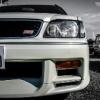Announcements
-
Similar Content
-
Latest Posts
-
Does anyone have a custom c34 stagea sub enclosure you want to sell? Located in Adelaide
-
I need one of these. Noting the age of the post and the OP may no longer be online but does anyone have one they want to sell? Im in Adelaide.
-
More then likely or the cap isn’t sealing properly
-
Tongue in cheek point that a proper test would be to see what the gauge says during a sustained lateral load.
-
Not following. Its worth noting that the N54 has no oil pressure sensor from factory, only a switch. I have retro fit a sensor so I can monitor the pressure. The car will now alert me if it drops.
-






Recommended Posts
Create an account or sign in to comment
You need to be a member in order to leave a comment
Create an account
Sign up for a new account in our community. It's easy!
Register a new accountSign in
Already have an account? Sign in here.
Sign In Now